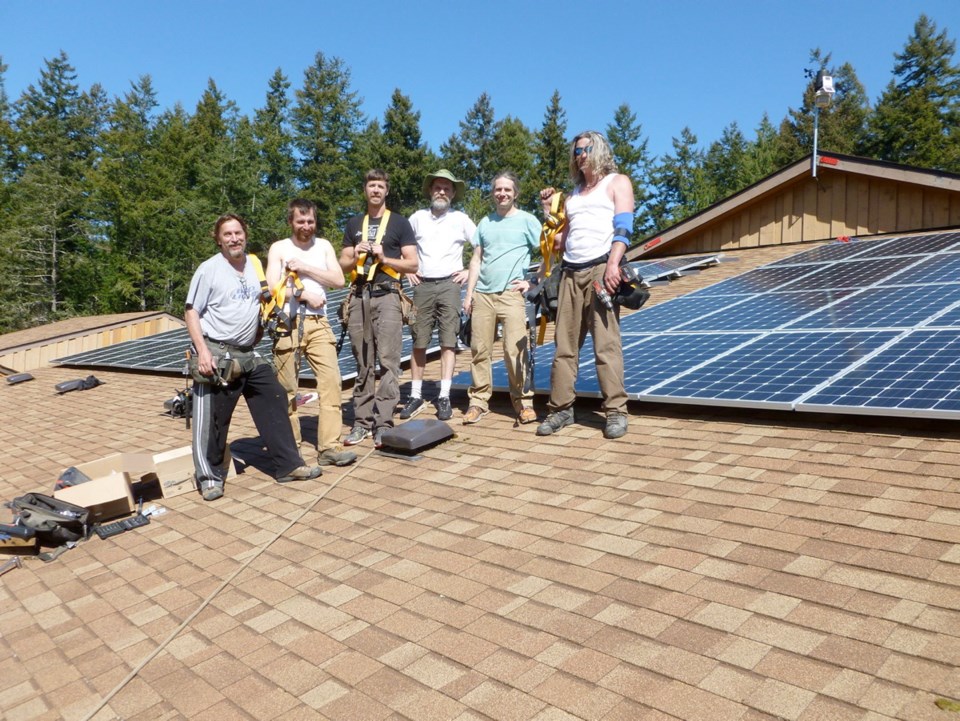More than 100 solar photovoltaic panels have been mounted on a Pender Island school roof as part of a plan to put panels on every suitable public building on the island.
The Pender School Solar Roof Project is the brainchild of the Pender Solar Initiative 2020, a group formed with a goal of installing solar photovoltaic systems on the roofs of as many as seven public buildings by 2020.
With the ability to generate 140 kilowatt hours of energy on a sunny day, the panels on the school have the potential to produce about 30,000 kilowatt hours of electricity annually — with an estimated saving of about $3,000 on the school district’s utility bill.
The first installation, completed last year, was on the roof of the recycling depot. Future candidates include the library, community hall, medical clinic and fire hall.
Help to harness solar power came from the Victoria Foundation.
“I believe we were successful in receiving funding because of their Victoria’s Vital Signs report,” said David Boyd, the project’s volunteer co-ordinator.
The annual publication includes innovative solutions that local organizations have undertaken to address issues facing the community. The solar project champions environmental sustainability.
Apart from the environmental benefit, the project will also pay dividends as a teaching tool for current and future students.
“Even before it began to generate energy, the project has already been a teaching tool,” said Boyd.
An energy monitor has been installed in the hall of the school. Students going to class every day can see how much clean energy is being harnessed in real time.
Apart from the environmental and educational benefits, the project will also pay it forward. The savings in energy costs will be converted into a bursary. The fund will be awarded to a Pender Island student to study in the fields of energy or climate change. It might also be used to acquire energy-related science equipment for the school.
Boyd and his non-profit group have already seen positive change with only two projects under their belt. Their first project, which consisted of 39 panels, took two days to complete. The school, with just over 100, took a day and a half. The school project was completed ahead of schedule and on budget.
Being on budget is easier for planners, as the price of solar panels has dropped dramatically, with costs down more than 80 per cent since 2005. The newer panels are easier to install, “like putting together Lego” said Boyd.
“Things are looking up, literally,” said Boyd. “Every day, residents drive by the school, showing them the striking image of clean energy at work.”



